Sagittaria subulata
Scientific name: Sagittaria subulata
Family: Alismataceae
Usual maximum size in aquariums: 30 - 40 cm (11.81 - 15.75 inch)
014
Recommended pH range for the species: 6.5 - 8
Recommended water hardness (dGH): 8 - 18°N (142.86 - 321.43ppm)
0°C 32°F30°C 86°F
Recommended temperature: 20 - 26 °C (68 - 78.8°F)
Reproduction of the plant: Runners
Origin (in the wild): North America
How fast these plants grow: Normal
Recommended substrate: Fine gravel
Demands on lighting: Medium
Ideal placement in a fish tank: Middle
Family
Alismataceae
Common Name
Dwarf Sagittaria, Narrow-leaf Sagittaria
Propagation
Sagittaria subulata propagates primarily through runners that emerge from the base of the mother plant. These runners spread across the substrate and develop small plantlets with their own roots. Once rooted, they can be left in place to form a dense carpet or gently relocated to other areas of the aquarium. When transplanting, care should be taken not to bury the crown of the plant, as this can lead to rot. Flowering is possible even when fully submerged; in such cases, the plant sends up a thin stalk that may produce small white flowers at the water surface.
Difficulty
Easy. Sagittaria subulata is a hardy and adaptable plant suitable for beginners and experienced aquarists alike. It thrives in a range of conditions and requires only moderate lighting and a nutrient-rich substrate to grow successfully.
Short Description
Native to the southeastern regions of North America, Sagittaria subulata is a versatile aquatic plant known for its narrow, grass-like leaves and adaptability. It typically reaches a height of 10 to 40 cm (3.94 - 15.75 inches), depending on lighting and tank conditions. Under low light, it tends to grow taller as it reaches for the surface, while under higher light, it remains compact and forms attractive, dense clusters in the foreground or midground. This species is widely appreciated in aquascaping for its simple elegance and its ability to blend well with a variety of tank layouts. It also contributes to improved water quality by absorbing excess nutrients and releasing oxygen.
Maintenance and Care
Sagittaria subulata prefers a pH range of 6.5 to 8 and can tolerate water hardness from 8 to 18°N (142.86 - 321.43 ppm). The ideal temperature range is 20 - 26°C (68 - 78.8°F), making it suitable for tropical community tanks. It grows best in fine gravel substrates rich in nutrients, though it will also benefit from root tabs or fertilized soil. The plant adapts well to medium lighting, but stronger lighting promotes more compact and vibrant growth. Regular trimming is not typically necessary, though older or damaged leaves can be removed to maintain a tidy appearance. In tanks with strong lighting and CO2 supplementation, Sagittaria subulata may form a lush, grass-like carpet.
Compatibility
This plant is highly compatible with a wide range of peaceful freshwater fish species. It offers shelter for fry and shy fish and contributes to the stability of the tank by reducing nutrient levels. However, care should be taken when keeping it with large herbivorous species, such as goldfish or certain cichlids, as they may uproot or damage the plant. It is particularly suitable for community tanks, nature-style aquascapes, and biotope tanks inspired by North American wetlands.
Submersion and Aquascaping
Sagittaria subulata can be grown both submerged and emersed, although it is most commonly used as a fully submersed plant in aquariums. When submerged, it forms flowing green clusters with thin, upright leaves that sway gently with water movement. In aquascaping, it is ideal for midground placement, but under strong light and compact growth, it can serve effectively as a foreground plant. When grown emersed in paludarium or riparium setups, it may produce flowers and broader leaves. Thanks to its simplicity and resilience, it is a reliable and attractive choice for a wide range of aquatic layouts.
Picture
Provided by Oliver
Pictures by Melissa





 Echinodorus “Ozelot”
Echinodorus “Ozelot”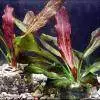 Echinodorus “Red Flame”
Echinodorus “Red Flame” Echinodorus “Red Special”
Echinodorus “Red Special”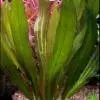 Echinodorus “Rubin”
Echinodorus “Rubin” Echinodorus “Tricolour”
Echinodorus “Tricolour”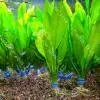 Echinodorus amazonicus
Echinodorus amazonicus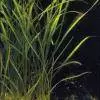 Echinodorus angustifolius
Echinodorus angustifolius Echinodorus bleheri
Echinodorus bleheri Echinodorus cordifolius
Echinodorus cordifolius Echinodorus grandiflorus
Echinodorus grandiflorus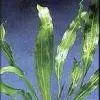 Echinodorus horemanii
Echinodorus horemanii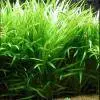 Echinodorus latifolius
Echinodorus latifolius Echinodorus macrophyllus
Echinodorus macrophyllus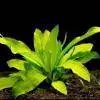 Echinodorus major
Echinodorus major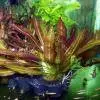 Echinodorus osiris
Echinodorus osiris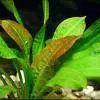 Echinodorus parviflorus
Echinodorus parviflorus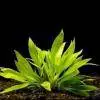 Echinodorus quadricostatus
Echinodorus quadricostatus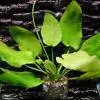 Echinodorus schlueteri
Echinodorus schlueteri Echinodorus subalatus
Echinodorus subalatus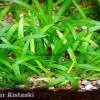 Echinodorus tenellus
Echinodorus tenellus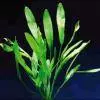 Echinodorus uruguayensis
Echinodorus uruguayensis Sagittaria graminea
Sagittaria graminea Sagittaria platyphylla
Sagittaria platyphylla